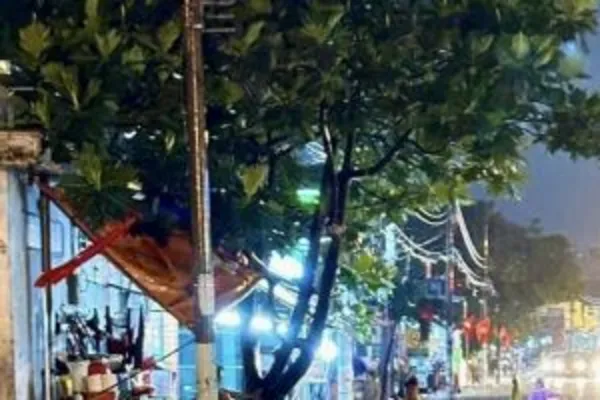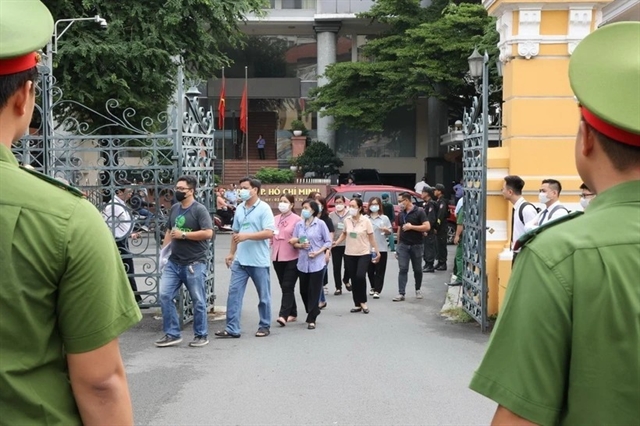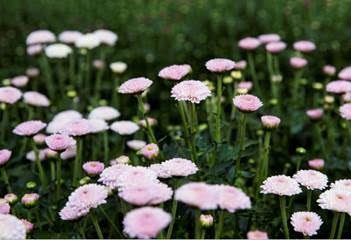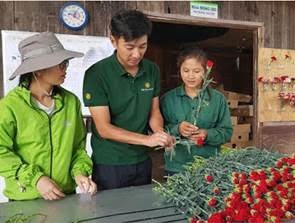 Expat Corner
Expat Corner

Japanese citizen Takahiro Nonume has a desire to make life more beautiful. And he has chosen Việt Nam to carry out his mission.
 |
| Pink and green: Chrysanthemums are grown in Đa Nhim flower farm for exports to to Japan. |
by Mai Kim Khuyên
ĐÀ LẠT — Japanese citizen Takahiro Nonume has a desire to make life more beautiful. And he has chosen Việt Nam to carry out his mission.
The friendly 35-year-old agriculturist, known as Taka by his colleagues, left his home country in 2016.
He moved to the Central Highlands province of Lâm Đồng, where he settled in Đa Nhim Commune, about 30km from Đà Lạt City, to help farm workers apply new techniques in growing flowers and make more profit from flower trading.
Taka said he had been impressed by Đà Lạt flowers the first time he visited the city five years ago, but only got the chance to work there in 2016.
He is now a production manager for Pan-Saladbowl under the Pangroup, an agriculture and food firm offering food products and solutions globally within an integrated value chain from Việt Nam.
As for why he chose to work in Đà Lạt, Taka said aside from the favourable conditions with regard to the labour force and weather conditions for flower growing, he found the local farmers and farm workers in Đa Nhim pleasant to work with. They are always hard working and want to study new things, he said.
He told Việt Nam News he was first introduced to the job at Pan-Saladbowl by a friend and at first, he aimed only to work. But while talking and working with local people on the farm, most of whom were ethnic minority K’Ho people, Taka found that he should help them improve their quality of life by applying Japanese techniques in flower growing.
"My love for flowers and people in Đà Lạt started from my first days and gradually became so deep that I want to work and live for a long time in Đa Nhim," said Taka.
Over the past two years, the Japanese man has helped import 150 varieties of carnations and 50 varieties of chrysanthemum from the Netherlands, Spain, Colombia and Japan to Đà Lạt. They are growing experimentally in the city and the most adaptable varieties will be chosen for mass production in many areas.
As a result, the farm currently cultivates more than 100 varieties of flowers with high quality and brilliant colours in Đa Nhim Commune, meeting the demands of consumers in domestic and world markets.
Taka said the flower farm in the commune could produce nearly 200,000 carnations and daisies every month, of which two thirds are exported to Japan and the rest is consumed domestically.
According to Hà Thị Thu Thùy, Taka’s assistant and production supervisor, thanks to his cheerful and enthusiastic tutoring in flower growing, about 40 farm workers have mastered the new techniques to meet quality requirements for flower exports to Japan.
Comparing flower planting in Japan with practices in Việt Nam, Taka said weather and nature had gifted Đà Lạt City and Lạc Dương District with favourable conditions for developing vegetables and flowers all year round, while in Japan there are four seasons a year and the weather changes fiercely.
Growing flowers in Japan demands much more investment in technology than in Đà Lạt City, so the cost for flower cultivation in his country was about 10 times higher than in Đà Lạt, said Taka. He added the city has great potential to increase flower exports to Japan.
“Many Japanese people prefer to purchase flowers imported from Việt Nam,” he said.
But, business enterprises and farmers in Đà Lạt face many obstacles in exporting flowers to Japan.
“Natural conditions for growing flowers in Đà Lạt are not a problem but the city should focus more on restructuring the production for higher quality and a greater number of products for both domestic and world markets,” Taka said.
Not only managing the flower farm in Đa Nhim, he is also taking part in a modern greenhouse farm project in Đạ Đơn Commune, Lâm Hà District.
There, Taka is doing research on a number of varieties of lettuce and white radish to expand the cultivated area and diversify production in the near future.
Kingdom of flowers
Embracing the typical natural and cultural features of the Central Highlands, the poetic Đà Lạt City is called by names that indicate its romantic beauty: “Little Paris”, “City of Pine Forests” and “Land of Mist”. But the name “Kingdom of flowers” is perhaps its most impressive and accurate.
Nestled at 1,500 metres above sea level, the city is quiet and pretty all year with mild climate and temperatures varying between 15 and 24 degree Celsius.
If Lâm Đồng is among the hi-tech agricultural production leaders nationwide, Đà Lạt has become its standard bearer with the greatest contribution to this specialised farming region.
In recent years, Đà Lạt flower brands have been diverse in types with thousands of native and imported varieties. The brands have incrementally established their position on international markets where they can compete on an equal footing with strong flower growers around the world.
According to a recent authority report, the province aims to expand the export of Đà Lạt flowers from the current 10 per cent of output to 30 per cent by 2020.
The report said a comprehensive renovation in investment strategy and farming techniques must be carried out to achieve the export goal. — VNS
 |
| Learning on the job: Taka is tutoring Vietnamese farm workers to preserve flowers after harvesting. |
 |
| Partnership: Japanese agriculturist Takahiro Nonume, 35, discusses with a colleague on methods to boost flower growing in Đa Nhim Commune, about 30km from Đà Lạt City. — Photos courtesy of Pangroup |





)


